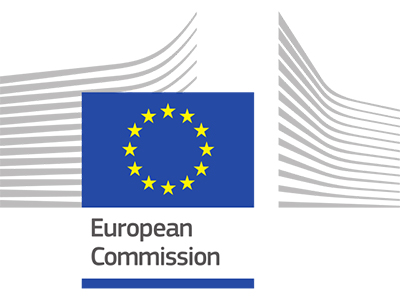Description
Five centuries ago, the Unknown was discovered by explorers such as Fernão de Magalhães. Making the parallelism, now, Humanity still needs to face unknown problems to promote sustainable development and knowledge-based economy, in a global change scenario. Metallic corrosion is still an unsolved economic, technical and environmental problem for modern societies consuming more than 3% of the GDP worldwide [1]. It is particularly severe and challenging in seawater-immersed steel-made structures (e.g. bridges, vessels) [1]. Current technologies to tackle maritime corrosion include the application of corrosion inhibitors (CIs) in protective coatings [1,2]. Since many of the high-performance CIs are very toxic to the aquatic organisms, bio-based CIs (e.g. sodium gluconate (SG); glutamic acid (GA), have been proposed as “greener” alternatives to the state-of-the-art CIs (e.g. 2-mercaptobenzothiazole (MBT); zinc phosphate (ZP) [3,5]. These bio-based CIs may feature low environmental risk, but require further insights in terms of anti-corrosion efficacy in maritime grade steel [3-5]. More recently, CIs immobilization was proposed by Prof. Dr. Tedim (Co-PI) et al. as an innovative technique to control the release of these active ingredients from the coatings matrix [2]. The technique has several advantages from which should be emphasized the reduction of spontaneous and premature leaching common in regular coatings and the environmental benefit (fewer ingredients used; less leaching) [2]. Under these circumstances novel anti-corrosion nanomaterials (ENMs) have been recently developed using layered double hydroxides (LDH) or silica mesoporous nanocapsules (SiNC) (Fig. 1) aimed at immobilizing toxic state-of-the-art CIs (e.g. MBT, ZP [2,6-8]) and environmentally-friendly molecules with anti-corrosion properties (e.g. SG, protected by a patent [9]). Some of these additives are being now validated by the Portuguese company Smallmatek, Lda. to assess the possibility to produce them at an industrial scale.
Taking into account the scarcity of studies on the effects of non-conventional NMs on marine organisms [10-19] and the novelty of the NMs developed by the UAVR team, Dr. Martins (PI), as part of his postdoc research, founded a joint-venture between both UAVR R&D teams aiming at understanding the lethal, physiological and biochemical effects of LDH-MBT, benchmarked against MBT and LDH, in a bivalve species. It was found that the immobilization decreased the acute toxicity of MBT when free in solution however, biochemical effects of LDH-MBT were not negligible due to the harmful MBT [20]. This justifies the implementation of a safer-by-design strategy and/or use of “greener” CIs, to decrease the hazard of MBT and other commercial CIs when immobilized in no/low (LDH) to moderately toxic (SiNC) unloaded ENMs for marine organisms [20-22]. But other questions remain not answered: What are the fate, behaviour and toxic effects of these ENMs on marine ecosystem? Can the encapsulation of bio-based CIs even lower more the toxicity of these new systems? If so, why and how? Can fate and behaviour be affected by the biogeochemistry of seawater and sediments? Can the hazard be affected by biogeography? NANOGREEN is intended to answer to these questions, at least partially, by taking advantage of the multidisciplinarity knowledge of the consortium (UAVR-UNESP;USP,SMT) aiming at, by the end of the project, present the first protective nanoadditive with the highest anti-corrosion and environmental performances worldwide, ready for further industrial validation.
In order to achieve this feasible goal, NANOGREEN intends to develop four novel bio-based anti-corrosion ENMs and compare its properties and anti-corrosion efficiency with four reference ENMs (Task 1) and then, add them into coatings to assess the corrosion performance when immersed. Then, only promising novel and reference nano-additives will be fully assessed in terms of fate, behaviour (Task 3), exposure and hazard in temperate and tropical environments of the Atlantic (Task 4) and in terms of sub-cellular effects in marine organisms (oxidative stress, neurotoxicity, genotoxicity, proteomics and metabolomics) and unveiling adverse outcome pathways (Task 5). Outputs will be presented to academics, industry, policy-makers and public through a well-coordinated dissemination strategy (Task 6; Fig. 2).
The novelty of the present proposal relies in the development of the first innovative high-performance anti-corrosion additive with proven low toxicity and environmental hazard in different biogeographic regions, using a very comprehensive and multidisciplinary approach. NANOGREEN pays attention to key societal challenges in the Atlantic Area and highlighted by the United Nations (e.g. oceans protection and risks mitigation). In this sense, NANOGREEN will increase the environmental awareness, will contribute to current legislation implementation and will foster the blue growth by gathering the sustainability to the additives Industry.
Main Local Researcher
Roberto Carlos Domingues Martins (CESAM)
Coordination
Universidade de Aveiro (UA)
Partners
Universidade Estadual de São Paulo, Universidade de São Paulo, Smallmatek
Outputs
Harmonizing nanomaterial exposure methodologies in ecotoxicology: the effects of two innovative nanoclays in the freshwater microalgae Raphidocelis subcapitata
Campos, F; Silva, PV; Soares, AMVM; Martins, R; Loureiro, SZn-Al layered double hydroxides induce embryo malformations and impair locomotion behavior in Danio rerio
Carneiro, D; Damasceno, EP; Ferreira, V; Charlie-Silva, I; Tedim, J; Maia, F; Loureiro, S; Martins, R; Pavlaki, MDGreen Nanotechnology: The Latest Innovations, Knowledge Gaps, and Future Perspectives
Martins, R; Kaczerewska, OBEffects of nanostructure antifouling biocides towards a coral species in the context of global changes
Ferreira, V; Pavlaki, MD; Martins, R; Monteiro, MS; Maia, F; Tedim, J; Soares, AMVM; Calado, R; Loureiro, SSponsors







